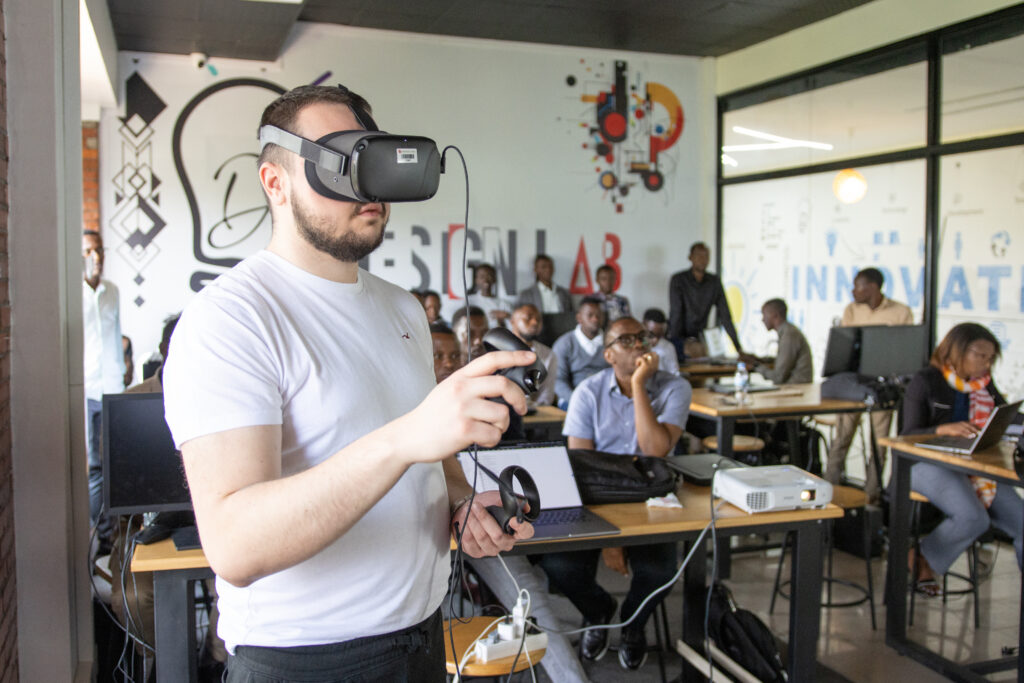
From Norway to Rwanda: Teaching VR Technologies
Hi, my name is Bjørnar, and I’m a student in Multimedia Technology and Design at UiA. I’m passionate about game design, VR, and photography—and I’ve even made a few games before. So, when I was asked to join this trip, it took me a little time to decide, but once I said yes, I’ve never looked back.
The purpose of the trip is to run a course in VR technologies, which honestly sounded awesome from the start. I’m so glad to be part of this, especially since we get to travel all the way to Rwanda to teach eager students. It’s such a cool chance to share my passion for games—especially VR—and to show off some of the amazing tech that’s slowly but surely changing the world.
Preparing for the trip and workshop
The preparations for this trip started long before we packed our bags. Throughout the fall semester, we had several meetings to plan the workshop, organize the subjects we’d teach, and set everything up in the Canvas system. It was exciting to see it all come together bit by bit, and the closer we got to December 2024, the more real it felt.
For my part, I was tasked with teaching about the idea process—how to take an initial concept and turn it into a prototype for a game. I also focused on the iterative development process, where feedback and revisions play a key role in improving a project. It was a topic I was passionate about, and I couldn’t wait to share my knowledge with the students in Rwanda.
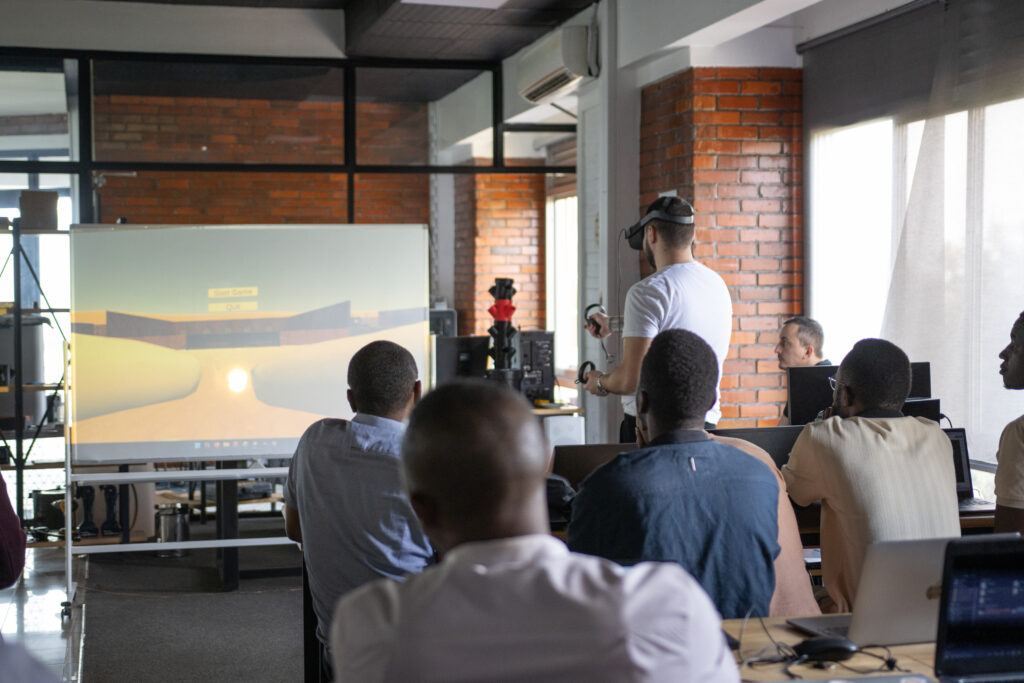
The Journey Begins
Finally, the day arrived—December 2nd. It was time to travel to Rwanda! As I packed up my materials and double-checked everything, a mix of excitement and nerves set in. The idea of flying to a completely new place to teach something I loved was thrilling, but I also felt the weight of the responsibility.
Would the students connect with what I had to say? Would the workshop go smoothly? These thoughts stayed with me as I boarded the plane, but the excitement of the adventure ahead quickly took over.
Arrival in Rwanda: First Impressions
As we stepped off the plane, the warm Rwandan air hit us—it was a welcome change from the colder weather back home. The warm climate settled in quickly, and I couldn’t help but feel a mix of excitement and curiosity as we made our way out of the airport.
Our first stop was to grab some food, which, I’ll admit, made me a bit nervous. As a picky eater with allergies, I wasn’t sure what to expect. To my relief, the meal turned out to be delicious—meat skewers and fries. It was simple, familiar, and just what I needed after a long flight. One surprise on the plate was fried bananas, something I didn’t expect to enjoy but actually loved.
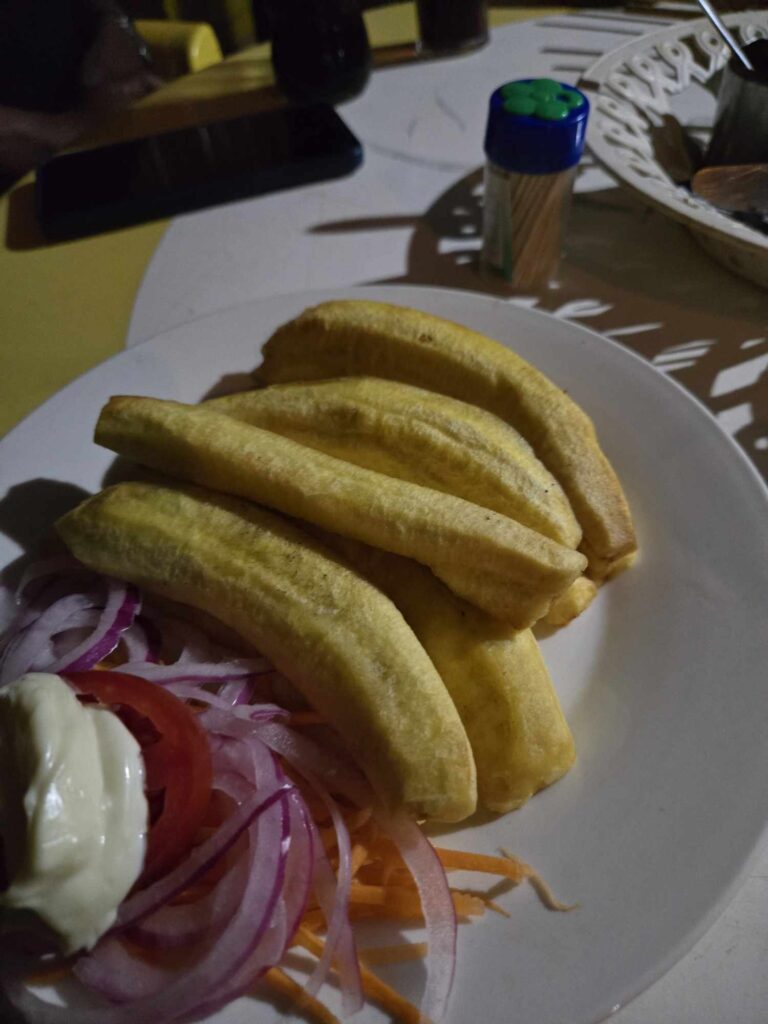
Driving through the city on our way to the next stop, I noticed the biggest difference from home: the traffic. It was like back in Norway but turned up a notch—more aggressive, faster-paced, and with countless scooters weaving through the cars. It felt chaotic at first, but there was an odd sense of rhythm to it, as if everyone knew the unspoken rules of the road.
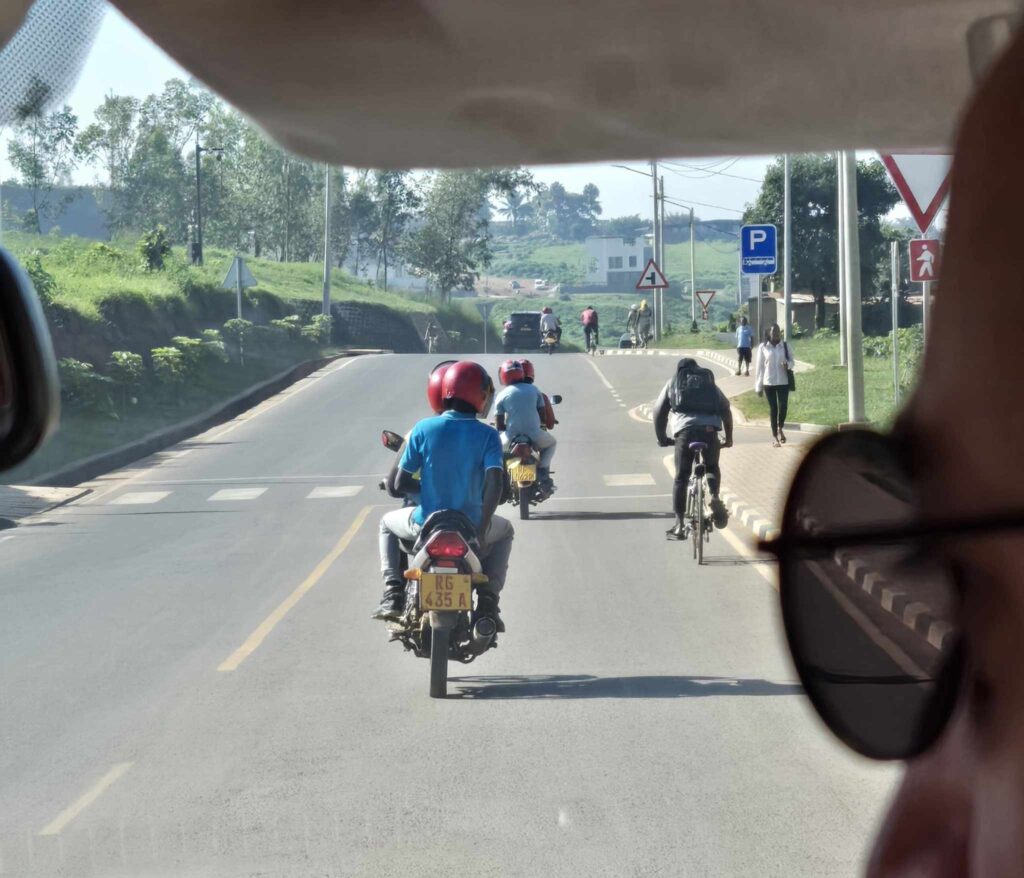
Settling In and First Day of the Workshop
After our travels and the delicious meal, we finally arrived at our stay for the trip—a house that was much bigger than I had expected. What surprised me most, though, was the cultural difference in how the house operated. There was someone to open and close the gates for us, and another person who came in to clean and prepare meals. It was a bit of a culture shock at first, as I wasn’t used to having helpers around like this, but it was also a glimpse into a different way of life that I found fascinating.
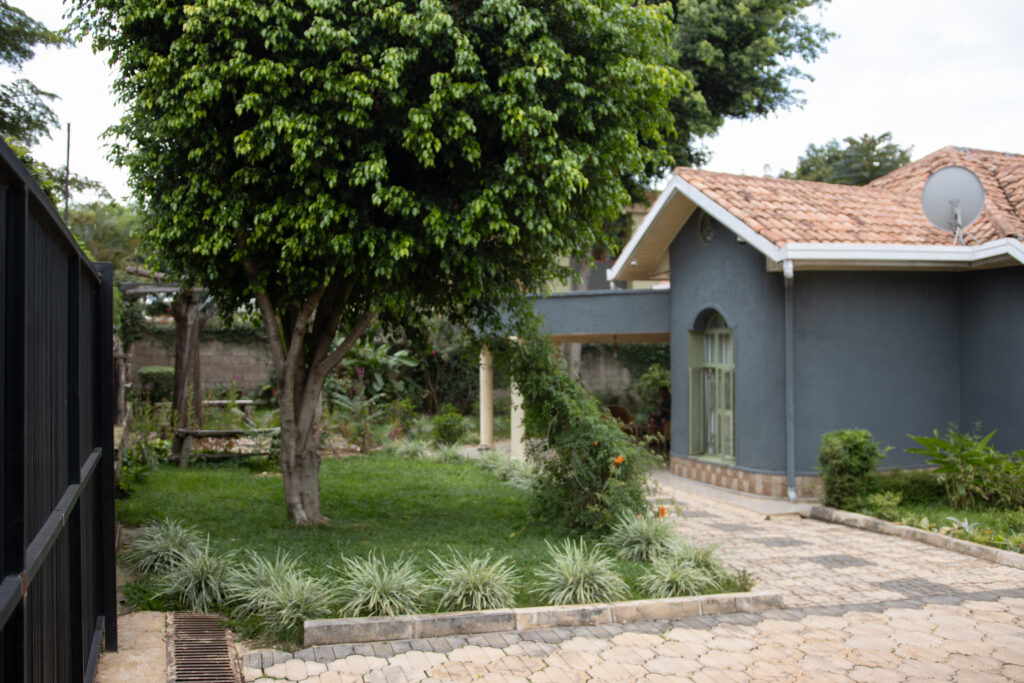
The next day was the start of the workshop, and this was the moment I had been preparing for. It was also the day my part of the course was scheduled. As we walked into the workshop space, we were greeted by our students for the first time. It was exiting to be on this side of the teaching.
Our teacher, Maurice, kicked things off by introducing us and giving an overview of the course. As I stood there, waiting for my turn to present, I felt a mix of excitement and nervous energy building up. The situation felt surreal—here I was, in Rwanda, teaching something I was passionate about. but also something that I have not been studying specificaly.
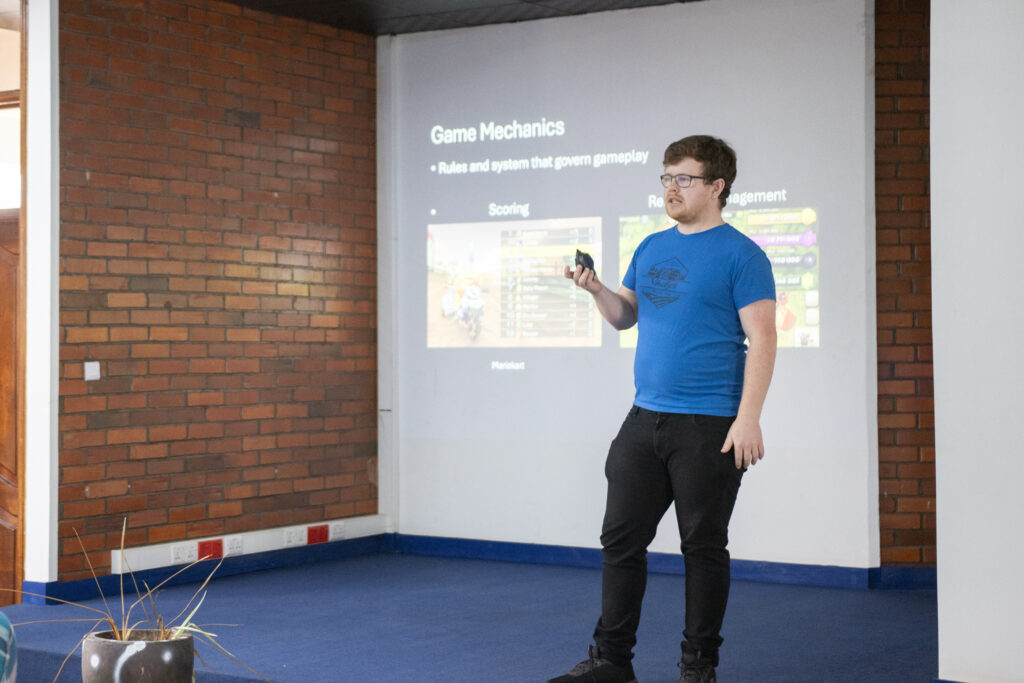
Teaching My Session: Sharing What I Know
Standing there in front of the students, I felt a mix of excitement and nerves. I was about to talk about something I’ve practiced and am really passionate about, but I don’t have an academic background in it yet. I just hoped my English would be good enough for them to follow.
I started by talking about finding an idea and how to build it into something real. I introduced them to the MDA framework—basically, a way to check if a game makes sense and why it works by looking at its Mechanics, Dynamics, and Aesthetics. It’s a concept I’ve only recently started learning myself since it’s not something we cover in our bachelor’s degree—it’s usually for the master’s program that Maurice recommended that I talked about. That made this presentation more out of my expertise but a realy good way to challenge myself, especially since I’m the only bachelor student on this trip.
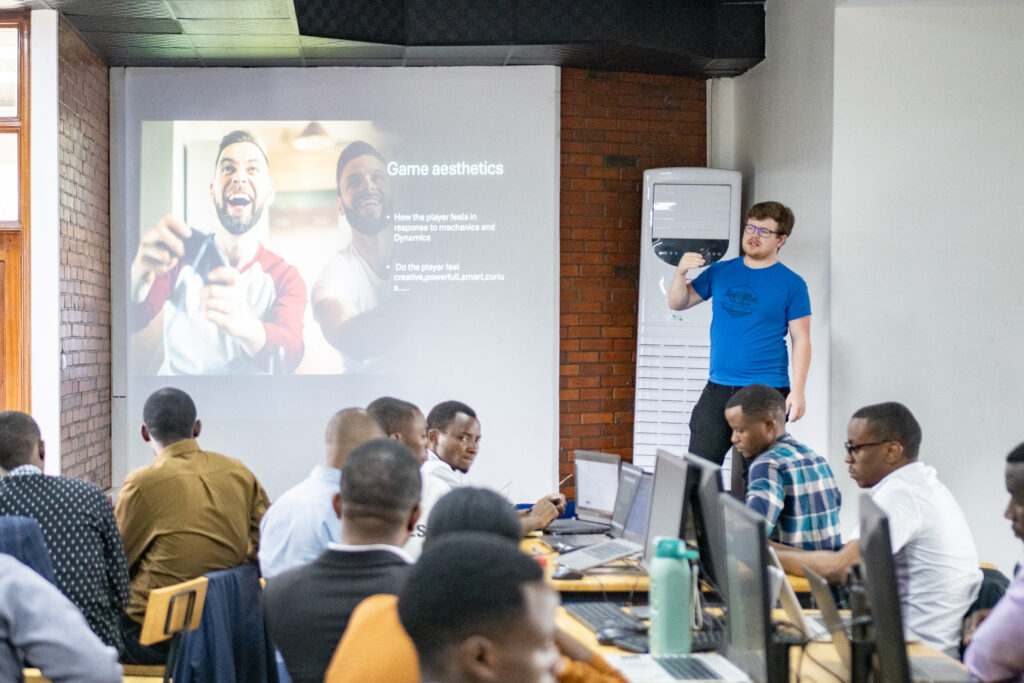
Splitting the Presentation: Getting Hands-On with MDA
To make things more interactive, I split my presentation into two parts. After explaining the basics of the MDA framework, I gave the students a task. They had to analyze a game on their phones and figure out how MDA worked in that game’s context. Then, they presented their findings to another group.
We got some mixed results, which I kind of expected. MDA is a big concept, and cramming it into a short presentation meant some of it would stick, and some wouldn’t. Still, it was cool to see how different teams tackled the challenge, and they gave it their best shot.
Once they wrapped up, I jumped into the second part of my presentation about the idea process, storyboarding, and getting them ready to create their own projects. But by then, time was starting to run out. I had to keep it short and focus on the basics, which wasn’t ideal, but it was enough to get them started.
For the last 40 minutes, the students split into groups and got to work on their game ideas. They started writing a synopsis, sketching a storyboard, and thinking about how MDA would work in their projects. Seeing them dive into it was awesome, and it was a great way to wrap up the first day of the workshop—and my part of the course.
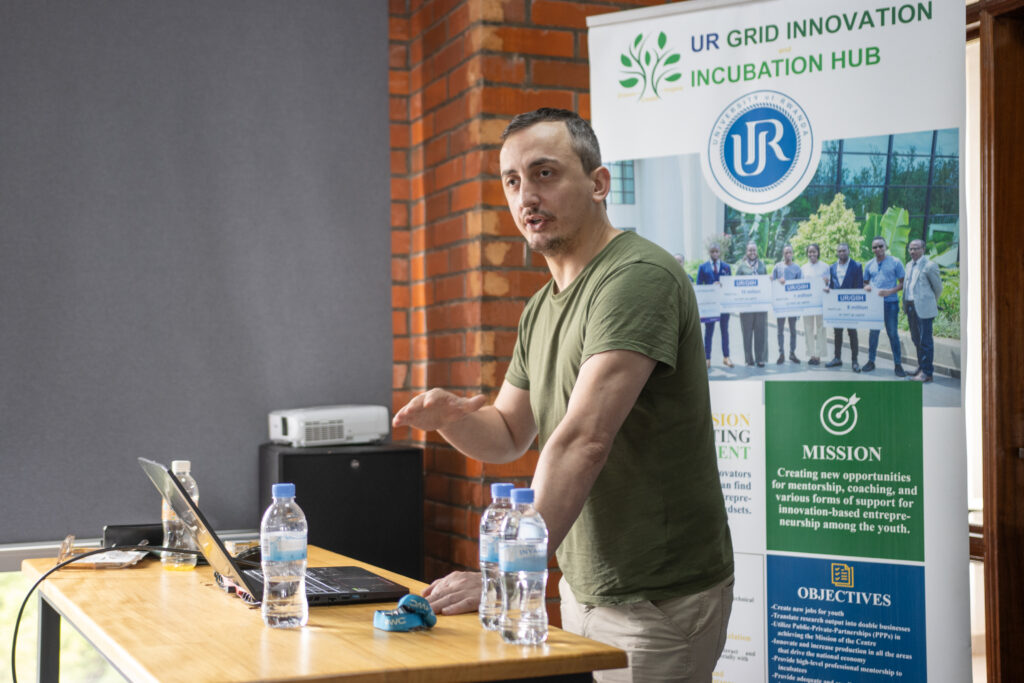
Kicking Off the Projects and Diving into Unity
The next couple of days were all about getting the students started on their projects and teaching them how to use Unity with VR. Adthe and Oskar ( Master students from University of Agder) took the lead on this part of the course, and they did a great job guiding the students and getting their equipment up and running. It was awesome to see how smoothly they handled everything. The next couple of days were all about getting the students started on their projects and teaching them how to use Unity with VR.
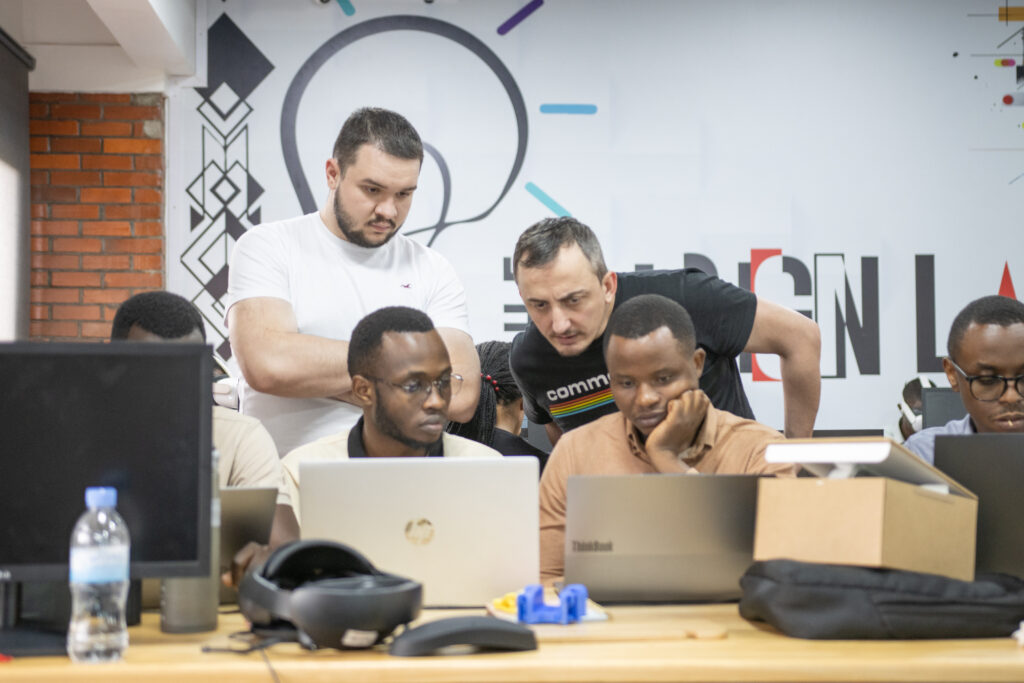
Photographing the TELLS Micro-Credentials meeting
On Friday I was asked to join Maurice and other teachers from Agder at the TELLS project meeting about Micro-credentials. it was fun to change things up for one day. The role was to take pictures of the meeting, capturing the speakers and the people involved. It was interesting to listen to the subject of Micro-credentials. I remember them talking about making smaller classes like the VR workshop we were doing and how this is a smart way to teach specific subject on a more focused scale.
“A micro-credential is the record of the learning outcomes that a learner has acquired following a small volume of learning. These learning outcomes have been assessed against transparent and clearly defined standards.“
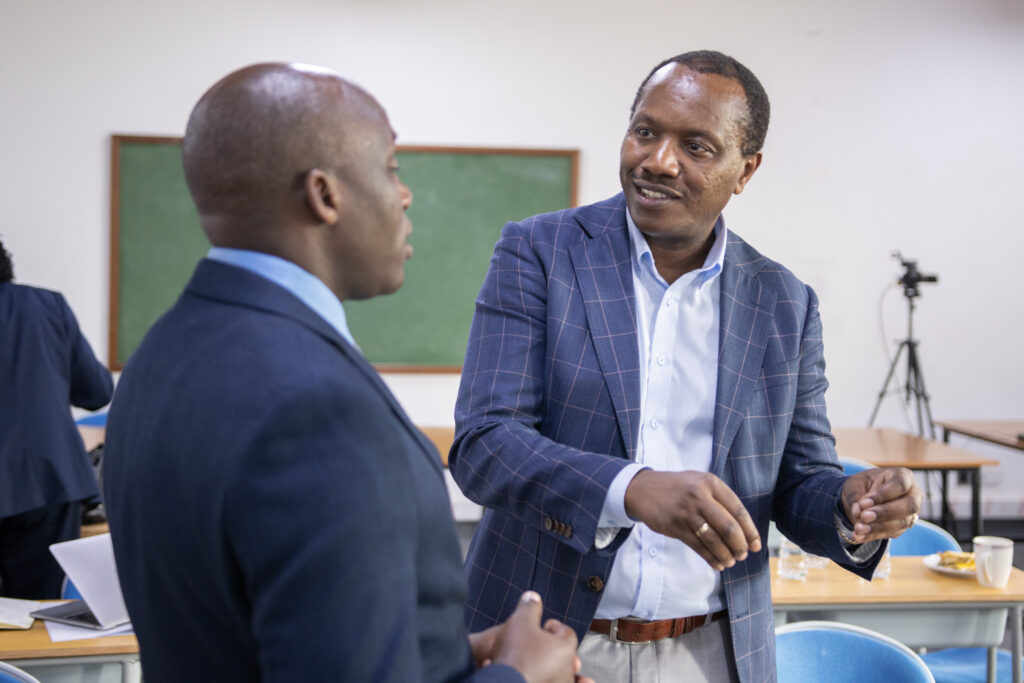

Weekend Break
After the TELLS day, it was the weekend, and the students had the next two days to finish their projects for the presentations on Monday. That meant we had the weekend free to relax and do something fun.
We went to resturants and got to see a little bit more of Kigali
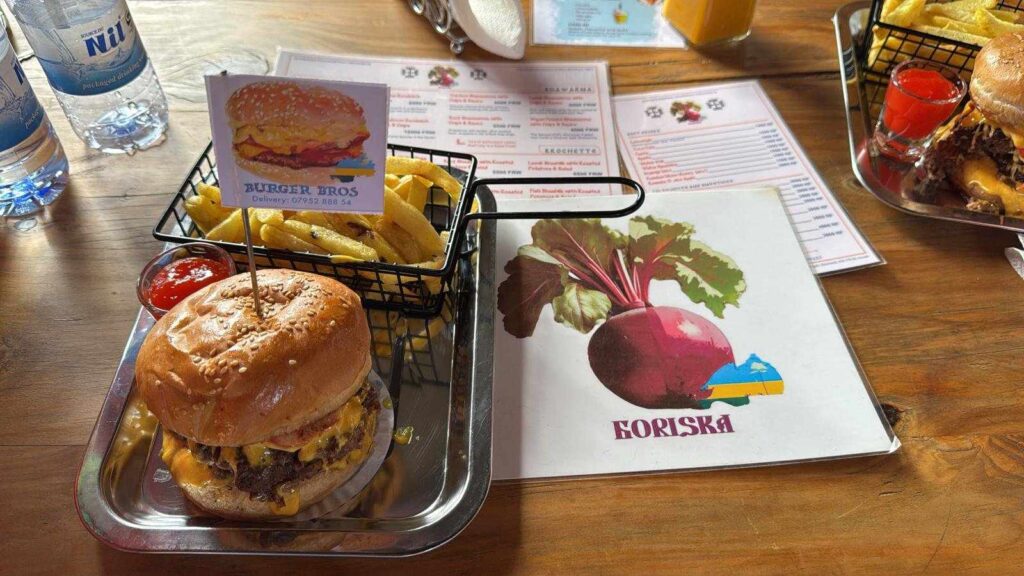
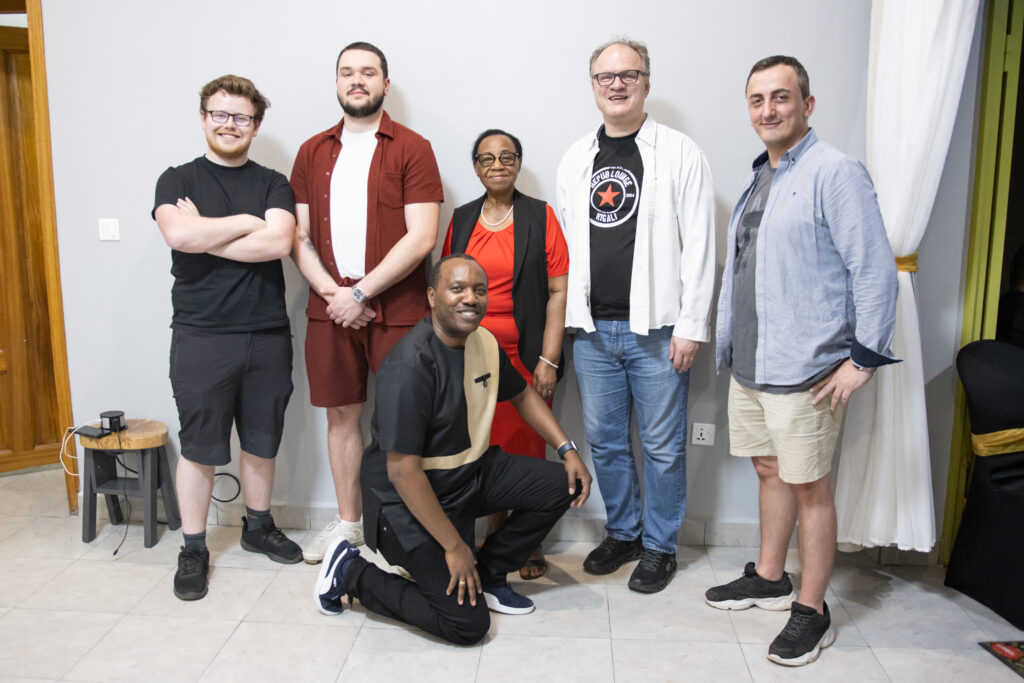
Project Presentation Day
The day of the project presentations arrived, and it was time for the students to show what they had learned and created over the past week. They each made a short presentation, covering the concept of their game, their storyboard, and how they applied the MDA framework. They ended with a VR demo, showcasing the work they’d put into their projects.
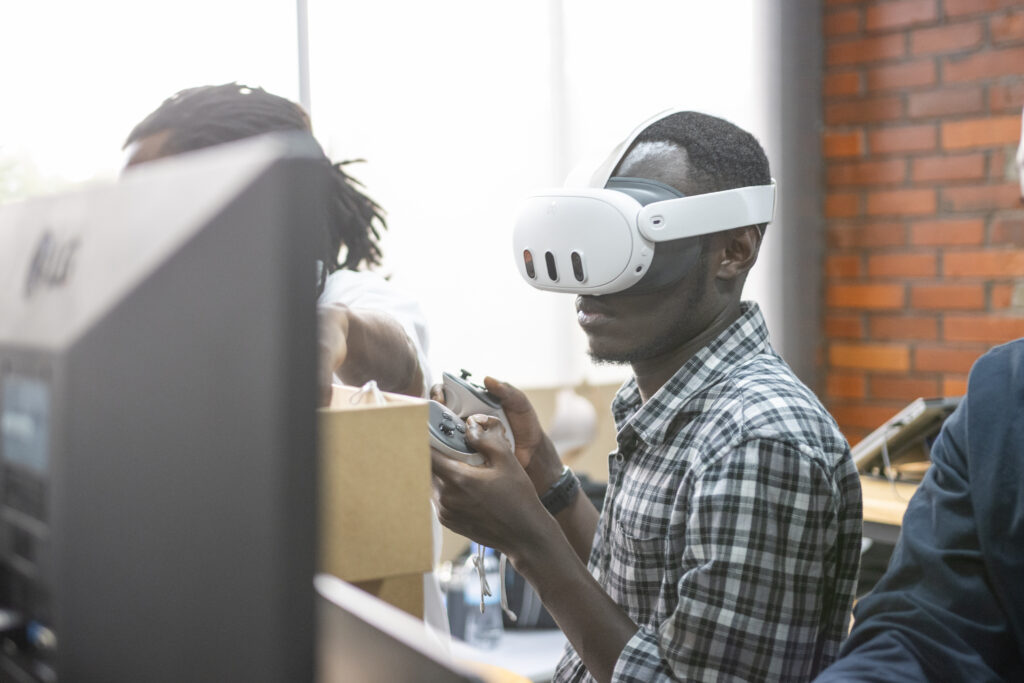
For once, me, Adthe, and Oskar were on the judging/teaching side of things. That was definitely something I didn’t expect to experience before i joined this project and I’m really glad I got to be part of it. It was cool to see the students present their ideas and projects, from a mouse maze to a War museum and beyond.
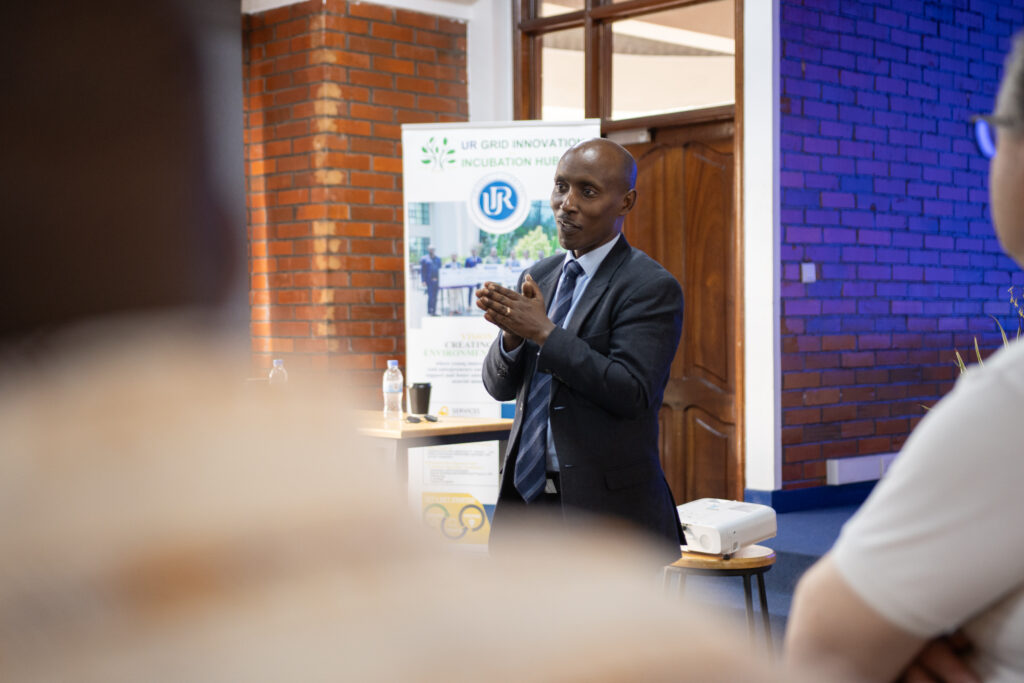
We ended the day by showing two of the projects to the teachers and others involved in the meeting. Once the course wrapped up, we went out for a nice dinner with the teachers and people connected to the project. I felt so grateful to be part of this experience and to see everything come together at the end.
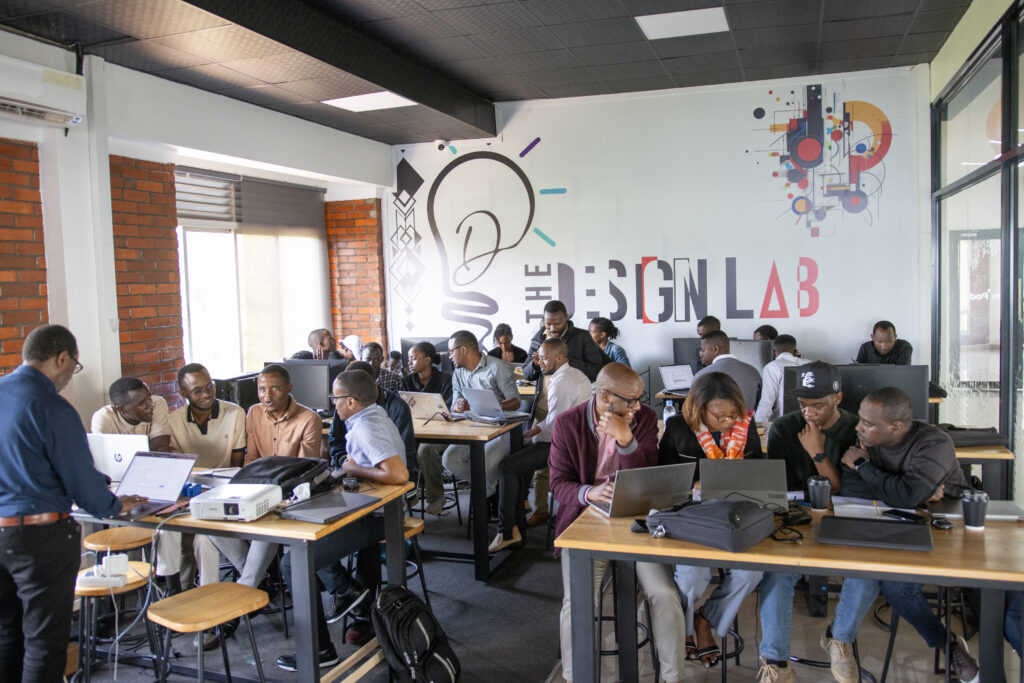
What I’ve Learned and How I’ve Grown
I’ve learned so much from this project, not just academically and technically, but also on a personal level. It was a challenge to present a subject to a class, but it helped me grow in ways I didn’t expect. Working abroad with people from different countries and cultures was an eye-opening experience, and it gave me the chance to experience things I never would have on my own.
I want to send a huge thanks to Maurice and the University of Agder for giving me this opportunity. Also, big thanks to Adthe and Oskar for making the trip as enjoyable and fun as it was. I’ve learned to take risks, grab opportunities as they come, and step out of my comfort zone.
